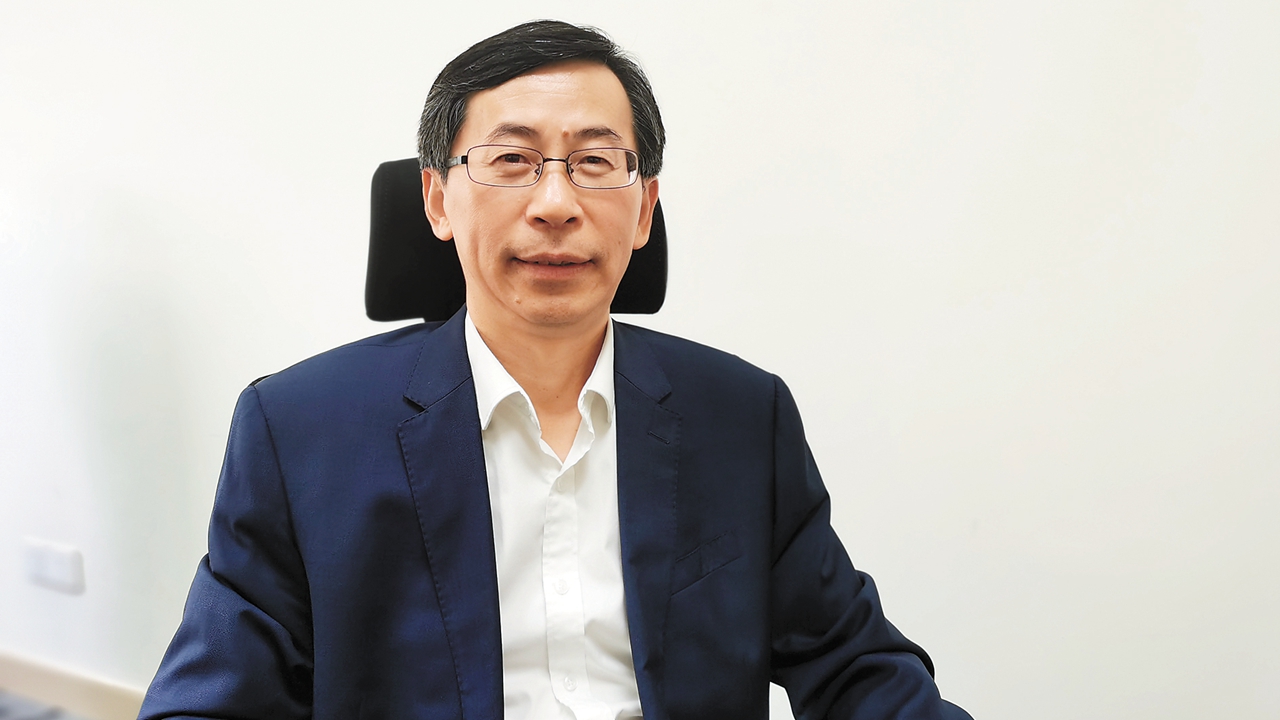Large research infrastructures bridge firms, researchers: professor
Large research infrastructures are public research platforms open to higher educational institutions, research institutes and enterprises so as to support the joint efforts of enterprises and researchers, according to Yu Shuhong, dean of the Institute of Innovative Materials of the Southern University of Science and Technology (SUSTech).
Yu, an academician from the Chinese Academy of Sciences, is responsible for the Material Genome Big-science Facilities Platform, one of the three large research infrastructures that announced its official settlement in Guangming District during the Guangming Science City Forum 2023 held April 27 and 28.

Yu Shuhong
Infrastructure empowers new material R&D
In September 2022, SUSTech signed a deal with the Guangming District Government to establish the Material Genome Big-science Facilities Platform, one of the city’s 10 large research infrastructures.
“The material genome platform will greatly serve the research and development (R&D) of new materials and help high-tech companies in the field of new materials tackle the bottleneck issues,” Yu told Shenzhen Daily in a recent interview.
According to Yu, the new materials are substantial foundations for scientific and technological development. However, working on new material R&D is not an easy job because breaking the obstacles to the technologies in the field is a challenge, and the development of the new materials industry depends on governmental support and the combined efforts of upstream and downstream firms.
“Shenzhen is home to many high-tech companies in the field of new materials. The infrastructures thus provide supportive platforms for the enterprises to get involved in the R&D process before achieving a new product,” Yu said. “The close communication between enterprises and researchers will accelerate the transformation of scientific achievements,” Yu added.
SZ, a promising intl. academic exchange platform
“The settlement of the large research infrastructures will also further attract scientific talents from Hong Kong and Macao to engage in basic research in Shenzhen,” Yu said, adding that “Shenzhen is also expected to be an international academic exchange platform.”
There are quite a few higher educational institutions with strong scientific and research forces in Hong Kong and Macao. Shenzhen, which neighbors Hong Kong, enjoys a favorable location enabling convenient mutual communication between universities and research institutes in both cities.
“I observed that some researchers from Hong Kong universities would come along here in the afternoon and head back to Hong Kong at night after communicating with our students,” Yu said.
“In the future, we [researchers from Hong Kong and Shenzhen] are expected to jointly apply for major scientific programs from the country, Guangdong Province and Shenzhen,” the professor added.
Appealing on firms to hone in original innovations
With the research field in biomimetic materials, Yu has led his team to develop artificial nacre-like and wood-like materials, etc.
“The pearls and shells with calcium carbonate as their main component naturally grow in beautiful shapes and unique colors. But why are synthetic materials with calcium carbonate as the main component can be only used as paints or coating?” Yu said.
Yu and his team hope to replicate the features from natural materials by learning from its microstructures to result in artificial materials.
Biomimetic materials are widely used in different fields, as applied in aircraft, for example. “We also cooperate with BYD, exploring the application of materials in electronic devices,” Yu said. In the future, artificial skeletons that are highly similar to humans’ or animals’ skeletons are expected to be synthesized.
“Solution-driven applied research is very important so I call on more enterprises to pay attention to original innovations,” Yu said.
Yu complimented Shenzhen entrepreneurs, saying that “many entrepreneurs could get involved in the initial R&D process as they would make predictive judgments that the scientists’ achievements would benefit the production of the companies’ products or help them handle bottleneck issues.”
In 2022, Tencent launched New Cornerstone Investigator Program, a nonprofit funding initiative that takes a forward-thinking approach to encouraging basic research spearheaded by leading scientists. Yu, as one of the first batch of 58 scientists financially supported by the program, said “I do hope my research could solve the bottleneck issues for the companies.”